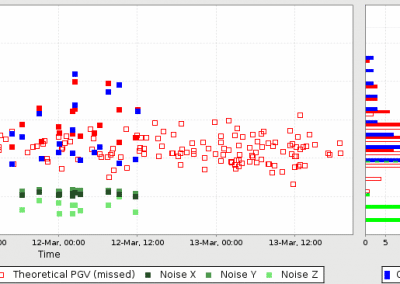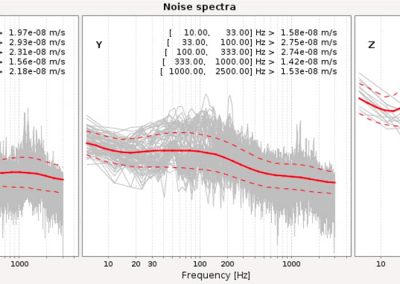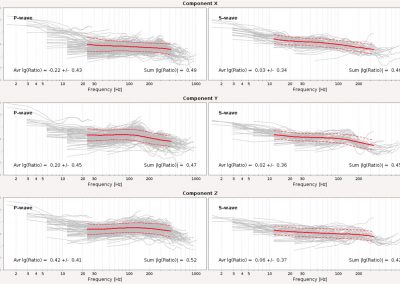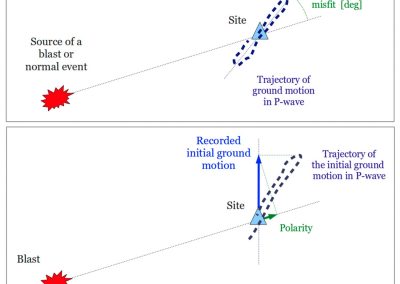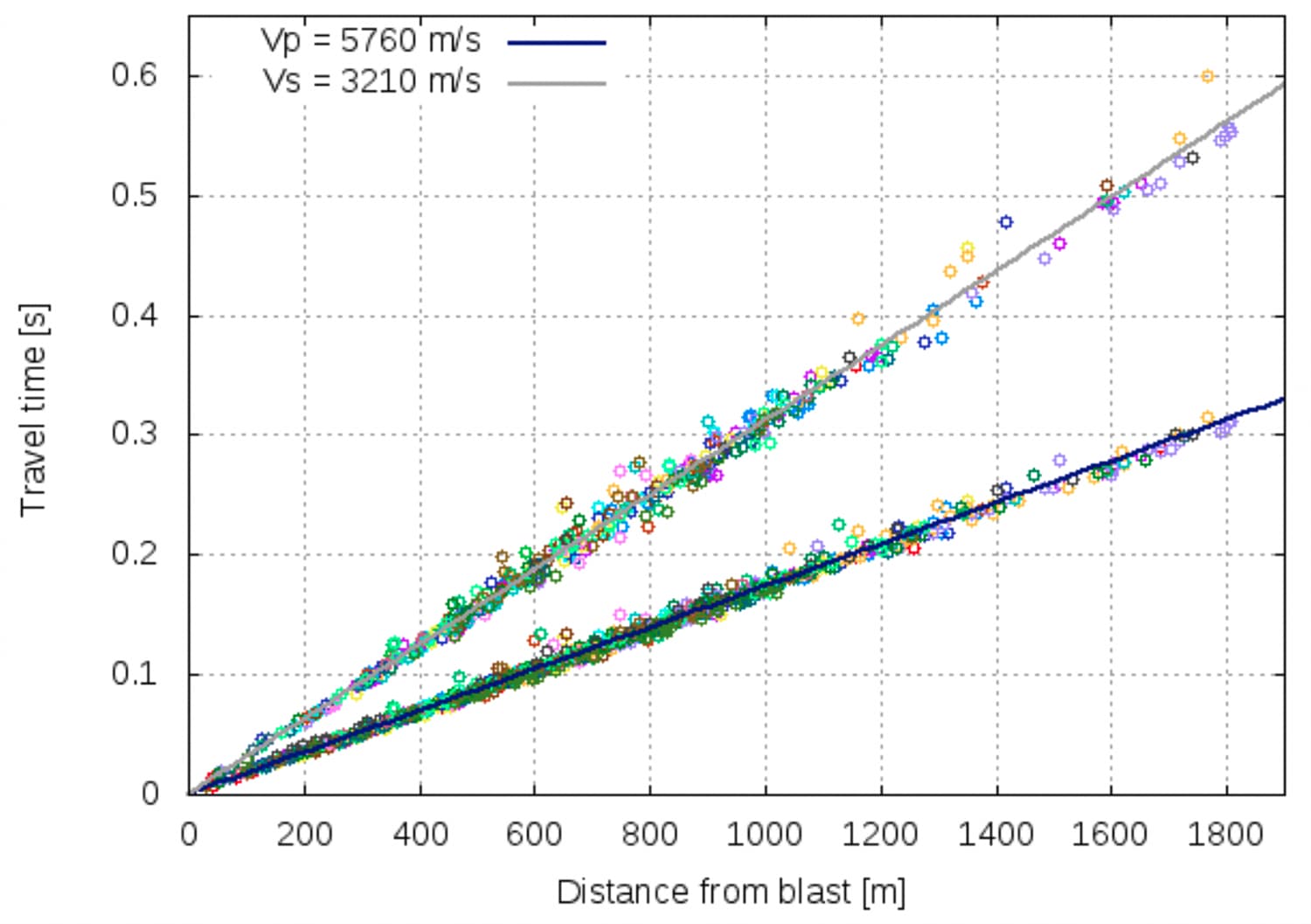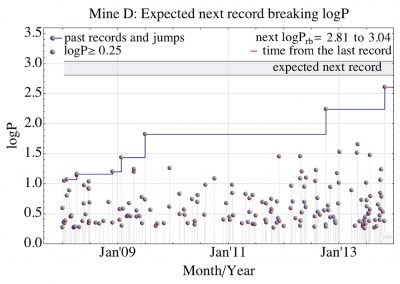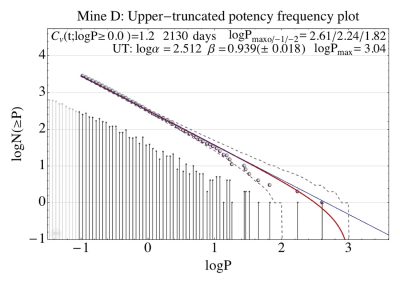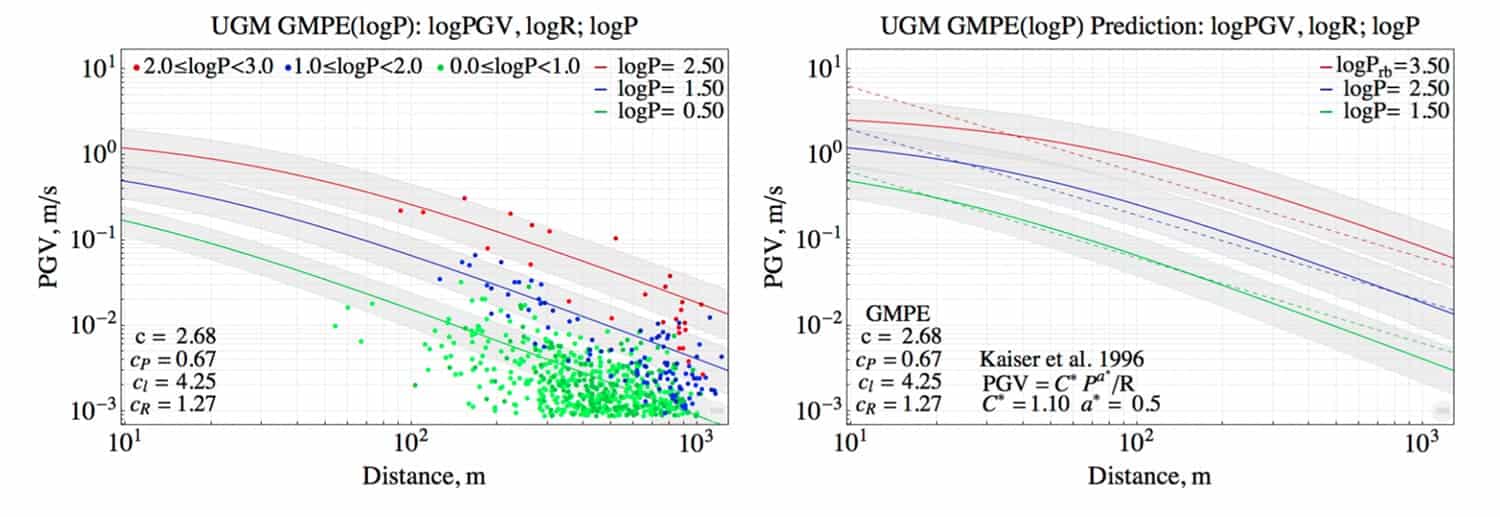Seismological Consulting
Improving seismic data quality and utilising the full potential of microseismic monitoring systems.
Situations can arise at mines that require special, focused projects. IMS offers a variety of ad hoc seismological projects and analyses designed to improve seismic data quality and to get the most out of a microseismic monitoring system. These can be related to calibration and verification of seismological system settings (e.g. velocity and attenuation calibration, and site performance), calibration of mine-specific hazard analysis tools (e.g. calibration of Short Term Activity Tracker, ground motion prediction equations, and ground motion hazard for future mining scenarios) or forensic analysis of specific seismic events (e.g. calibration of Short Term Activity Tracker, ground motion prediction equations, and ground motion hazard for future mining scenarios) or advanced forensic analysis of specific seismic events (e.g. instant large-event analysis, and advanced large event analysis).
SEISMIC SYSTEM AUDIT
Verification of the performance of seismic sites is important for maintaining a fully operational microseismic system that is able to extract accurate information about seismic events. Recorded seismic data is used to evaluate performance in the following categories:
Background Seismic Noise
The pre-trigger waveform recordings of all sites are used to calculate the root-mean-square and spectral characteristics of background noise on a per-component basis. This helps to identify potentially problematic sensors, or explain variations in system sensitivity.
Site Response
The spectral response of sites is evaluated by comparing the recorded and expected P- and S-wave signals. This helps to identify damaged sensors or those experiencing strong resonances. Appropriate cut-offs can then be set so that these resonances do not corrupt estimates of seismic source parameters.
Orientation and Polarity
Using the property of P-waves that they are polarised in the direction of their propagation, we verify the orientation settings of sensors, which is required for moment tensor inversion and location with direction algorithms.
Acceptance / Rejection Ratio
This is a summary of how often sites are used in processing. This is helpful in identifying faulty or misconfigured sites, which would consistently be excluded from processing.
SEISMOLOGICAL SYSTEM CALIBRATION
Assessment and improvement of quality of seismic data, including noise rejection, blast discrimination, velocity calibration and calibration of seismic quality factors. System calibration ensures the highest possible quality data. It includes the following aspects:
Velocity Calibration
Calibration blasts with known location are used to invert for the most appropriate per-site P- and S-wave velocities. When required, more complex 3D velocity models can be calibrated.
Blast Discrimination
Production and development blasts conducted in mines often appear similar to normal seismic events, leading to misclassification and polluting the seismic dataset. A special blast-discriminator algorithm, using waveform and source parameter information, can be calibrated to routinely identify these misclassified blasts. The result is a cleaner dataset. The algorithm is described in the following paper.
Noise Rejection
The sensitive sensors used in microseismic systems may record undesired signals and noise, such as electrical noise, gravitational and mechanical impacts in ore passes, crushers and other machinery. A number of noise-rejection algorithms can be calibrated and applied to the dataset to remove these unwanted signals.
Calibration of Seismic Quality Factors
Seismic quality factors (Q-values) define how quickly seismic waves lose energy due to inelastic attenuation or scattering as they travel through the rock mass. Calibration of these seismic Q-values is important for reliable estimates of seismic source parameters, particularly radiated seismic energy.
SHORT-TERM ACTIVITY TRACKER
Calibration of Short – Term Activity Tracker (STAT)
STAT is a special tool in Ticker3D that monitors the current activity rate, and quantifies the probability that activity is higher than a reference rate. The utility of STAT is based on the principle that if the rate of seismic activity increases, so does the probability that one of these events may be larger and damaging. Once calibrated, STAT can be monitored in real time, and automatically notifies if the activity rate increases.
INTERMEDIATE AND LONG – TERM HAZARD
Assessment of Intermediate- and Long – Term Seismic Hazard
Intermediate- and long-term hazard assessments quantify the probability that a potentially damaging seismic event will occur in a given volume within a given interval of time in the future (on the order of months to years). The method of assessment is presented in Sections 3 and 4 of MSRB, and includes the following steps:
- the quality and consistency of seismic data is checked, and the largest events are manually reprocessed
- a seismogenic volume is selected
- the expected value and upper limit of the next record-breaking event is evaluated
- the probabilities of occurrence of events is calculated
The assessments should be re-evaluated routinely (annually or bi-annually) or when the largest event record is broken.
GMPE CALIBRATION
Development of Ground Motion Prediction Equation (GMPE)
Ground motion prediction equations (GMPEs) are specially calibrated equations that relate the ground motion to the size of an event (in terms of seismic potency or radiated seismic energy) and the distance from the event. The estimation of ground motion can be done in terms of peak ground velocity/peak particle velocity (PGV/PPV) or cumulative absolute displacement (CAD). GMPEs are used to perform ground-motion hazard assessments, identify areas that potentially experienced damage during a large event, and estimate inelastic deformation associated with seismic events.
GROUND MOTION HAZARD FOR FUTURE MINING
Assessment of Seismic and Ground Motion Hazard for Future Mining Scenarios
The assessment is based on the modelling of seismicity expected for the planned mining steps. The Salamon-Linkov method is used for this. The modelling needs to be calibrated for historical mining steps using the observed seismicity.
Combining observed and expected seismicity allows for the estimation of future seismic hazard and ground motion hazard. This requires the estimate of the next record-breaking event and calibrated ground motion prediction equation. The results can be presented in terms of likelihoods of events according to the risk assessment matrix adopted at the mine. The details of the method can be found here.
This method is most useful when comparing the seismic or ground motion hazard for different mining scenarios (e.g. ranking different stoping sequences).
INSTANT LARGE EVENT ANALYSIS
Rapid Large Event Analysis
Within hours of a large or damaging event, analysis by an experienced seismologist will confirm location, location uncertainty, source parameters and results of moment tensor inversion.
ADVANCED LARGE EVENT ANALYSIS
Advanced Analysis of Large or Damaging Seismic Event
Advanced analysis of large or damaging events can provide insight into the mechanics of their sources and help to explain the damage. The analysis can include:
- confirmation of location and location uncertainty
- source mechanism inversion and testing of potential sources
- analysis of fore- and aftershocks
- inversion of slip distribution
- assessment of dynamic loading to excavations


